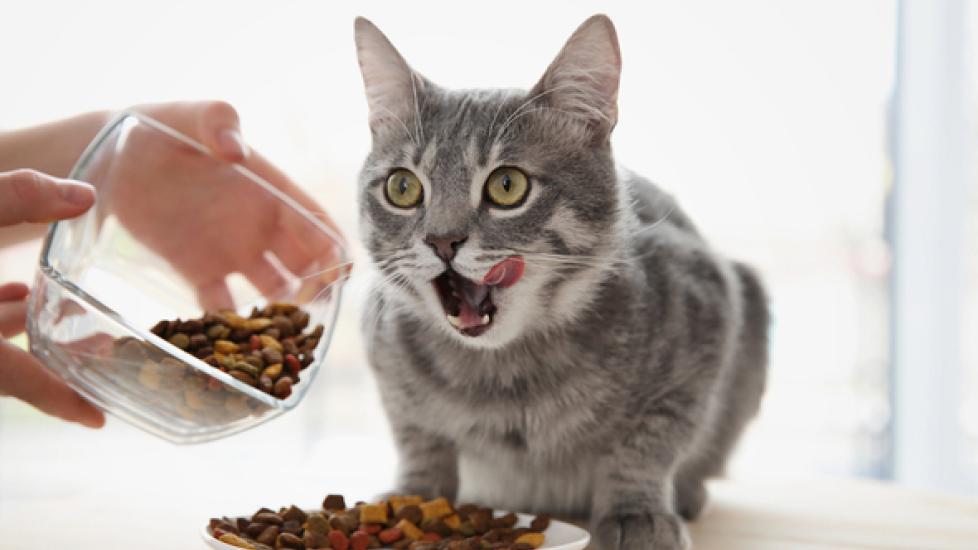How Much Should I Feed My Cat?
Image via Africa Studio/Shutterstock
Unfortunately, there is no simple answer to how much cat food your cat needs. How much a cat needs to eat depends on a variety of factors, including size, age, metabolic rate, the amount it exercises, and even environmental temperatures. In addition, the same volume of different foods can have varying caloric and nutritional contents, showing that a one-size-fits-all approach will not work. This does not mean, however, that owners are without any resources to help figure out how much to feed their cats.
For starters, use the feeding guide on the cat food label. It will look something like this for a dry food:
This gives you a ballpark idea of what your cat should be getting. But be aware that the ranges are pretty large to accommodate the needs of different individuals within a certain weight range. Also, take note that the amount listed is "per day," not "per meal." I recommend that my clients measure out the day’s complete ration and place it in a sealed container to reduce the chances of overfeeding. This way, everyone in the house should know to only take meals from this container rather than out of the bag.
Once you’ve used the back of the bag to come up with a starting point, assess your cat’s body condition to narrow in on what the correct amount should be. If your cat is already at her ideal weight, offer an amount that falls in the middle of the recommended range. If she’s a little thin, use the bigger numbers, and if she’s a little "portly," use the smaller ones.
Every two weeks or so, reassess your cat’s body condition and adjust how much food you offer accordingly. Once you have found the amount that maintains your cat’s ideal body condition (i.e., not too thin, not too fat), you can use monthly weigh-ins in addition to body condition scoring to make small adjustments to how much you are offering to keep her right where she needs to be.
Of course, what you feed is just as important as how much you feed. While you are looking at the label, make sure your cat’s current food is providing her with high-quality, natural ingredients and balanced nutrition. The MyBowl tool can help you determine whether your cat’s current food is providing optimal nutrition and can also be used to compare foods if you think they might benefit from a change. If your cat needs to gain or lose a lot of weight, talk to your veterinarian. He or she can rule out any health disorders that might be causing, or might have developed as a result of your pet’s weight, and can put together a plan that suits your cat’s particular needs.
You should also ensure that your cat is not only getting enough food, but that they are getting the sufficient nutrients from meat based foods. Cats require Taurine, an amino acid that is found only in animal based protein. And according to the ASPCA, milk should not be fed to cats because cat do not produce the enzyme that breaks down the lactose in milk and it can cause vomiting.

Dr. Jennifer Coates
See Also
Help us make PetMD better
Was this article helpful?

